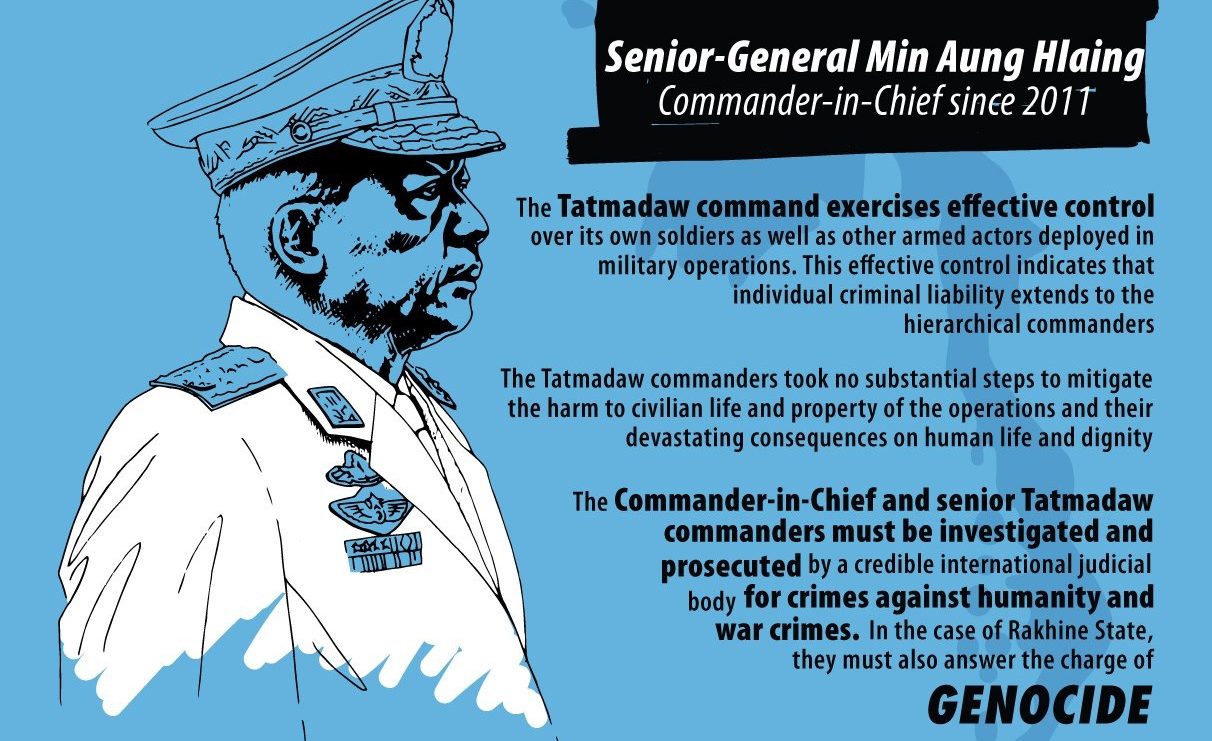Myanmar’s civilian government must work harder to remove the military from politics, the members of a UN fact-finding mission said today as they released a damning report that documents in fine detail the military’s atrocities in Rakhine, Shan, and Kachin states over the last year.
The report, compiled over the last 18 months, is based on interviews with more than 850 people, including victims of military violence.
“Soldiers separated the groups into men and women. The men were all in one group and were killed. Men who were not shot dead, who were struggling or severely injured, were killed with a knife,” said one Rohingya man who was shot by Myanmar troops during “clearance operations” in Aug. 2017.
Last month, the members of the fact-finding mission described the clearance operations as “genocidal” and have called for Myanmar’s military leaders to face prosecution at the International Criminal Court.
They also accused Myanmar’s civilian government, led by State Counsellor Aung San Suu Kyi, of having “contributed to the commission of atrocity crimes”.
The 444-page report is full of grisly details on Myanmar’s brutal treatment of ethnic minorities, including murder, torture, gang rape, and enslavement. But to ensure that the basic facts are not buried under the mountain of evidence and testimony, the fact-finding mission published five infographics to summarize its findings.
Here they are:










Truth Seeker says
If the 444 pages are consistent with the infographics, they reflect a clearly biased assessment of the atrocities committed in Rakhine and elsewhere. As an example look no further than the final panel of the final infographic where a harshly qualified sentence in a seeming aside acknowledges that conflicts between opposing political/military groups have included abuses on both sides. Yet in that barely more than a footnote panel, “Tatmadaw” is sensationally emphasized with font dozens of times more powerful than its context. This same degree and type of bias is shown throughout the infographics. It calls to question what I would hope is the purity of its purpose.
Look, it is obvious to anyone that segments of the army participated in horrible acts–of the same scope that virtually any powerful force uses when responding to attacks on its own that result in losses to its personnel. Yet the UN investigators critically undermine the credibility of their conclusions in their reports. And Yangon Coconuts continues to erode its pretense of being a useful reporter of fact by belligerently (and seemingly maliciously) giving prominence to the U.N. conclusions in every mention of decades-old conflicts within Myanmar with barely a mention that these are civil wars in which the governments legally in power are defending themselves from violent attacks–not unlike what any other government would and is obligated to do under similar circumstances.
I’m beginning to have a serious problem with your Yangon editor and the underlying “flavor” of his work for you there. Perhaps it is time for him to clear the air by explicitly sharing his personal “mission” and explaining its basis.